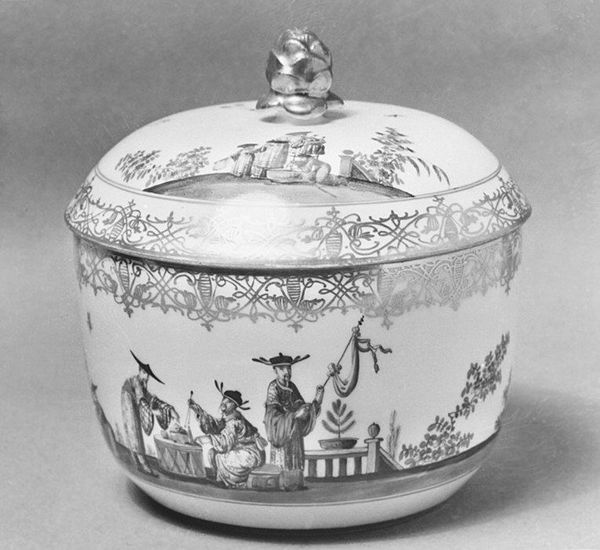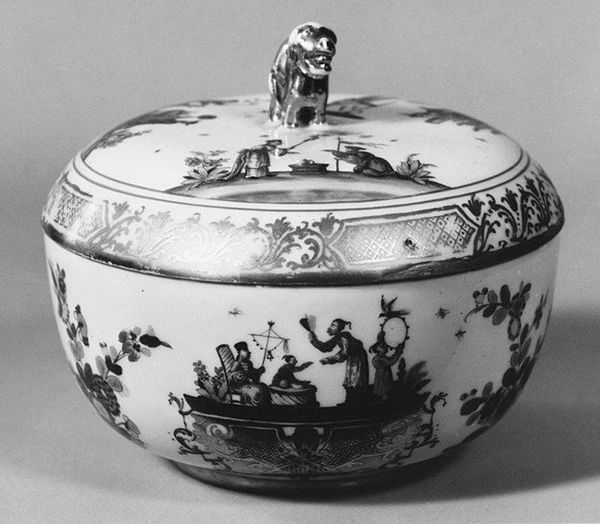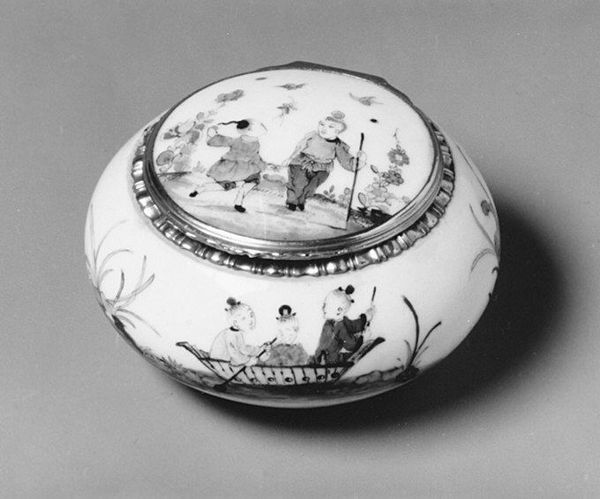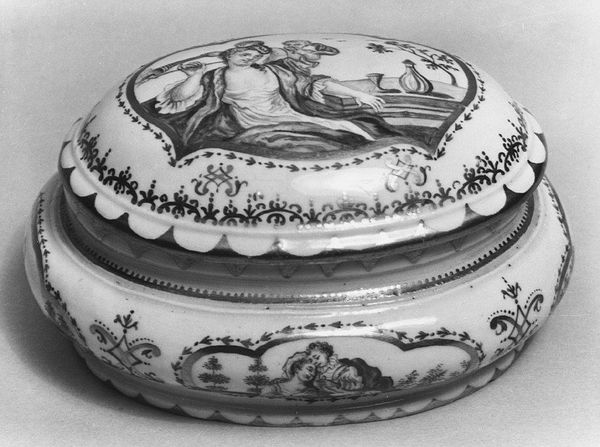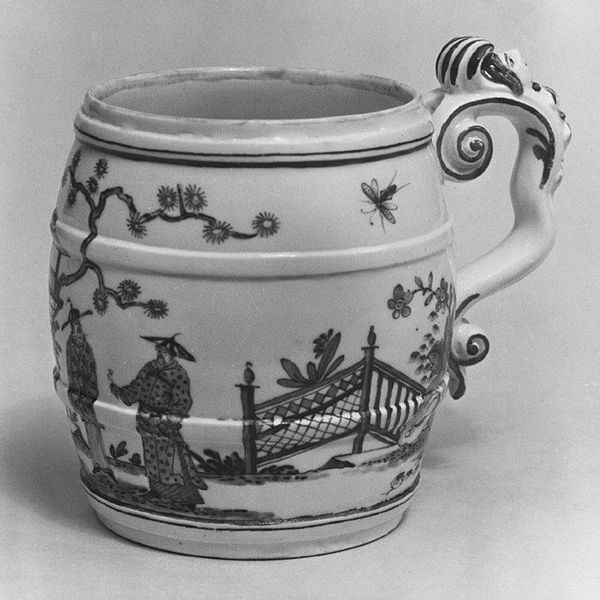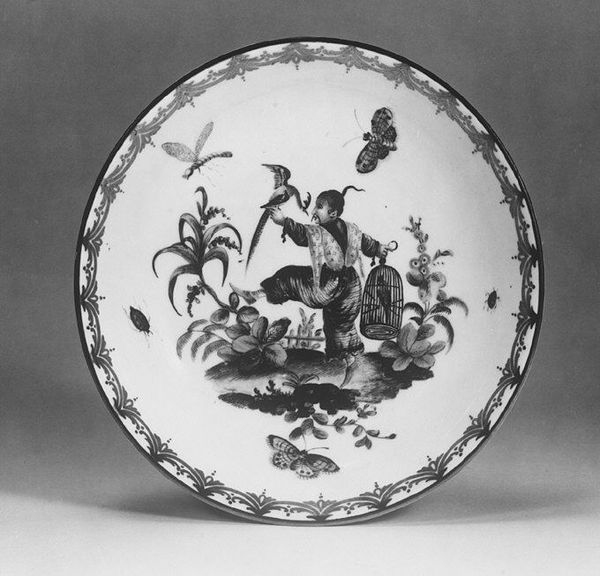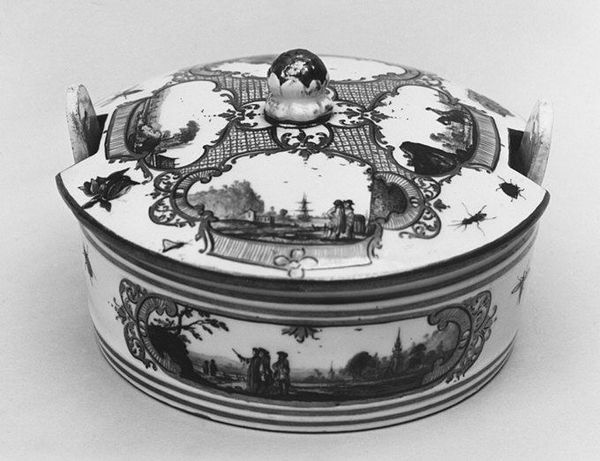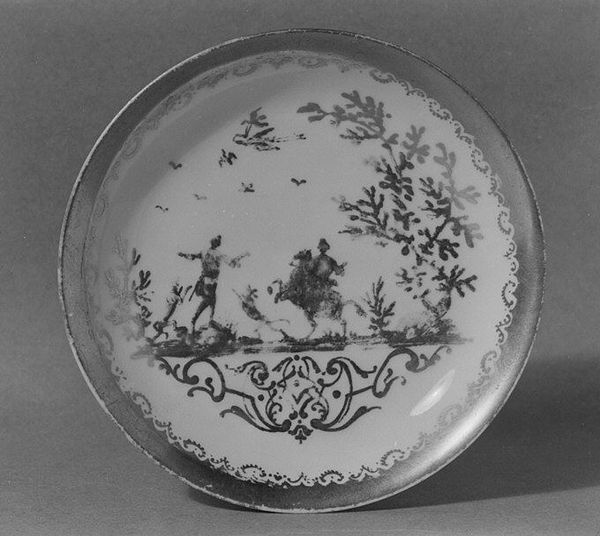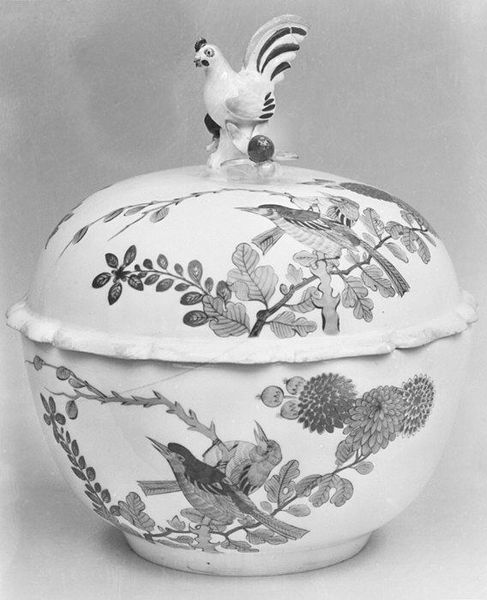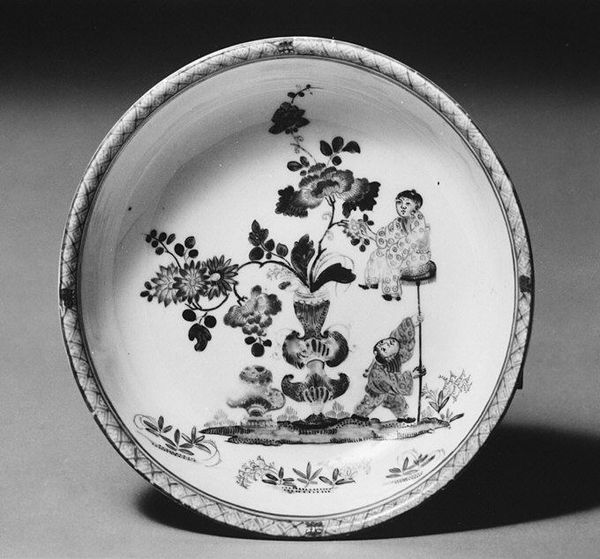
ceramic, porcelain, sculpture
#
asian-art
#
ceramic
#
porcelain
#
sculptural image
#
sculpture
#
decorative-art
#
rococo
Dimensions: 4 1/4 × 4 5/8 in. (10.8 × 11.7 cm)
Copyright: Public Domain
Editor: Here we have a "Sugar Bowl with Cover," made of porcelain by the Meissen Manufactory, sometime between 1730 and 1740. The details in the painted scenes are exquisite. I am fascinated by its form and how it imitates a lacquered surface, could you share your perspective? Curator: This piece highlights the 18th-century fascination with Asian art and material culture, influencing production in Europe. Meissen porcelain directly emulated Chinese porcelain, and the scenes reference Chinoiserie, showcasing a specific, colonial relationship with the far East. Consider how the sugar bowl appropriates exotic motifs not for their original cultural meanings, but to fulfill aristocratic desires for luxury goods and represent global trade networks. What processes and global trade made sugar, porcelain, and these designs accessible? Editor: So the material, the decoration, and the function, all point to specific systems of production and exchange operating at the time? The porcelain itself, that labor-intensive production process, becomes part of the art’s story? Curator: Precisely! Think about the labor needed to extract the raw materials, craft the porcelain, and then decorate it, often mimicking techniques associated with painting. Also, consider how its purpose – to hold sugar – speaks volumes about consumption patterns tied to colonial economies and, let's not forget, exploitation of labor through slavery. How does understanding this change your impression of the work? Editor: It adds a darker, more complex layer. It is no longer simply a beautiful, decorative object, but also a marker of historical inequalities and exploitation, revealed through its very materiality. Curator: Exactly. Understanding the interconnectedness of material culture and production reveals the story behind luxury goods. Editor: Thank you. I’ll certainly consider material and the labor in my future research. Curator: Wonderful. Examining the labor and processes involved provides valuable insights into its history and broader context.
Comments
No comments
Be the first to comment and join the conversation on the ultimate creative platform.

